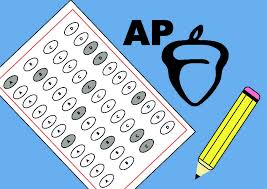Equity Grading
March 7, 2023
Everywhere, students are talking about the new grading system Grading for Equity. Students have many opinions of this system, but first, what actually is equity grading?
Equity grading is a system for grading in which teachers use a 0-4 scale instead of the standard A-F scale. Some teachers will not grade homework and use it as an extra practice tool. Not grading homework is part of the equity grading system; it makes sure that no students are required to do work if they are not able to because of home-life reasons. This allows, “people who have other responsibilities outside of school to have the time to do the things they really need to do,” said WHS Director of English Language Arts Daphne Fay.
I like equity grading because the grades are based more on if I understand the material than if I’m getting the material correct.
— WHS freshman Juliana Fry
Many students believe that this grading system means you can’t get 100% on assignments. WHS freshman Miyana Bahl mentioned, “I’m working as hard as I can on my assignments, but I am unable to get that hundred.”
The counter argument is that an “A+ should really show that you exceeded the expectations of this course/assignment,” says WHS math teacher Ms. Long. She shares her grading system and how students are able to get that 100% or A+. Students need to go above and beyond to achieve that A+. Not only showing that they understand the material but also putting the content/skill into practice.
“People have gotten hundreds on assignments just by getting it correct,” shares WHS freshman Juliana Fry whose teacher participates in using this grading system. “I like equity grading because the grades are based more on if I understand the material than if I’m getting the material correct.”
“With this system, students have the opportunity to get graded on the content in class without having any sort of subjective measures affecting their grade,” says WHS math teacher Ms. Dwyer. This grading system allows students to have a better understanding of the material and creates a system where students are graded on content in the classroom.
Subjective measures include participation, presentation skills, attitude, and more. This allows students to be able to truly show what they know in class, and not be affected by teachers grading all these other things that don’t actually show how well they know the material. Each student thrives with different teaching environments.
“Not all students are the same, so if we want to grade all students by the same standards, at the same time we have to have a way of allowing that students will have different needs than others,” says WHS English teacher Ms. Black. “It is important to grade everyone on their ability to understand the content other than the way they act or behave in class.”
In the end there are still a lot of smaller details that have to be worked out within the equity grading system. There is still not a consistent way of applying it and putting it into action across the curriculum. As equity grading expands, students and teachers will become more accustomed to it and it will be easier to understand. Currently, students are very conflicted on whether or not they like equity grading. It can be a confusing system, and hopefully the consensus on which system is more effective with assessment student learning will become clearer as this system is implemented more and more over the years at Waltham High School.











